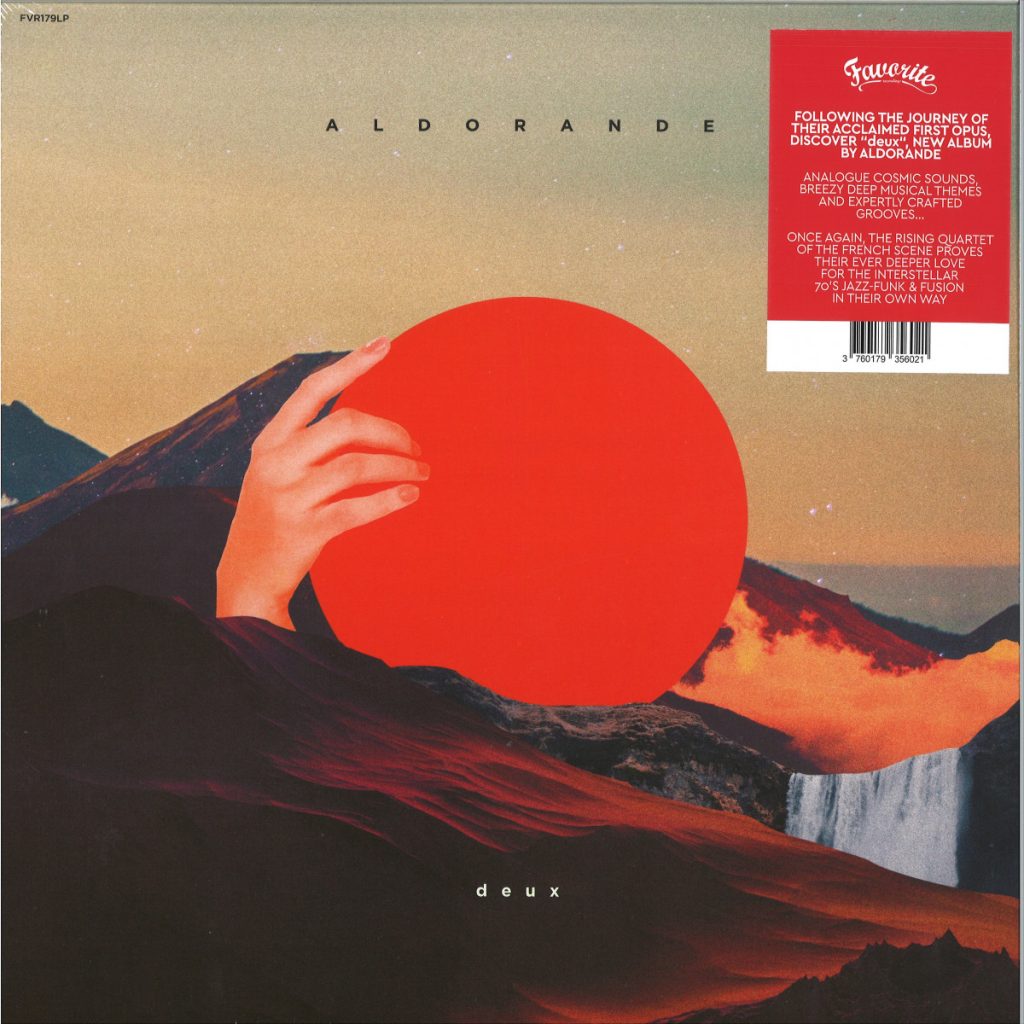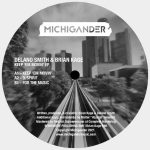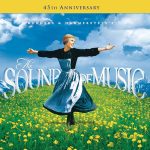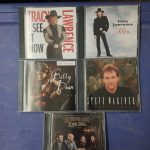Modern jazz music is a genre that blends traditional jazz elements with contemporary styles, creating a fresh and innovative sound. With complex harmonies, improvisation, and experimental approaches, it captivates both jazz enthusiasts and a wider audience.
This genre emerged in the late 1940s and 1950s as musicians sought to break away from the constraints of swing and bebop, and create something new. Artists like miles davis, john coltrane, and herbie hancock were instrumental in shaping this genre, incorporating elements from rock, funk, and electronic music.
Today, modern jazz continues to evolve, with artists pushing boundaries and exploring new sonic possibilities. It is a dynamic and captivating genre that showcases the creativity and virtuosity of its musicians.
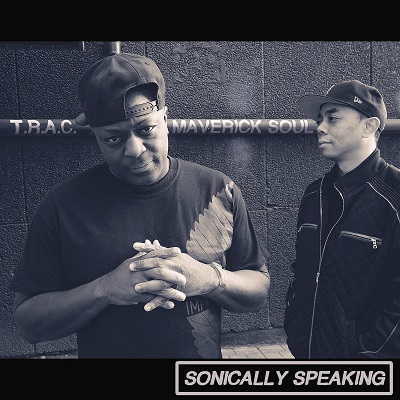
Credit: oldtothenew.wordpress.com
The Evolution Of Modern Jazz
Early Origins And Influences
- Jazz music has a rich history that spans over a century, with its roots tracing back to the late 19th and early 20th centuries in the african-american communities of new orleans.
- This genre of music emerged as a fusion of several musical traditions, including ragtime, blues, spirituals, and marching band music.
- The unique blend of african rhythms, european harmonic structures, and improvisation techniques formed the foundation of early jazz.
- Key influencers of early jazz include louis armstrong, jelly roll morton, and duke ellington. These musicians and others played a significant role in shaping the genre and popularizing it among a wider audience.
- Early jazz was often performed in small bands, known as “hot jazz,” which brought together different instruments like trumpets, clarinets, trombones, and rhythm sections consisting of piano, banjo, drums, and bass.
Development Of New Techniques And Styles
- Over the years, jazz music continued to evolve and incorporate new techniques and styles. This evolution was driven by the creativity and innovation of jazz musicians.
- In the 1940s and 1950s, a movement known as bebop emerged, characterized by intricate melodies, faster tempos, and extended improvisation. Musicians like charlie parker and dizzy gillespie were at the forefront of this new style.
- Post-bop, which followed bebop, introduced further variations, with artists like john coltrane and miles davis pushing the boundaries of improvisation and exploring new harmonic structures.
- Fusion jazz emerged in the 1960s and blended elements of jazz with rock, funk, and electronic music. This genre was characterized by the use of electric instruments, synthesizers, and a more pronounced rhythm section.
- Free jazz, pioneered by ornette coleman, experimented with unconventional chord progressions, emphasized improvisation, and challenged traditional musical structures.
- Jazz-rock fusion also gained popularity in the late 1960s and 1970s, combining elements of jazz improvisation with the energy and power of rock music. Bands like weather report and mahavishnu orchestra embraced this style.
- Contemporary jazz continues to reflect the influence of various genres and cultural elements, with artists exploring different fusions, such as latin jazz, afro-cuban jazz, and smooth jazz.
Influence Of Notable Jazz Musicians
- Numerous notable jazz musicians have left an indelible impact on the genre and its evolution.
- Louis armstrong, often referred to as “satchmo,” popularized jazz and brought it into the mainstream. His virtuosic trumpet playing, distinctive scat singing, and charisma made him an iconic figure in jazz history.
- Duke ellington, a prolific composer and pianist, led his orchestra for decades, creating timeless compositions that showcased the sophistication and elegance of jazz.
- Miles davis, one of the most influential figures in jazz, constantly reinvented his sound and played a pivotal role in the development of various subgenres, from cool jazz to jazz fusion.
- John coltrane expanded the boundaries of improvisation and pushed the technical and emotional limits of the saxophone, leaving an enormous impact on the avant-garde and free jazz movements.
- Other influential musicians include ella fitzgerald, billie holiday, thelonious monk, charlie parker, and herbie hancock, among many others. Each of these artists contributed to the evolution of jazz through their unique styles and musical vision.
Jazz music has come a long way since its early origins, incorporating diverse influences, evolving techniques, and the visionary contributions of noteworthy musicians. From the rich tapestry of new orleans to the avant-garde experimentation of modern jazz, this genre remains vibrant, constantly adapting and captivating audiences worldwide.
Exploring Modern Jazz Genres
Contemporary Jazz Fusion
Contemporary jazz fusion is a captivating genre that combines elements of jazz with various other musical styles, creating a fusion of sounds that appeals to a wide range of music enthusiasts. Here are some key points to explore about contemporary jazz fusion:
- Unique blend: Contemporary jazz fusion merges elements of jazz, rock, funk, and electronic music, resulting in a diverse range of musical expressions. It combines intricate improvisation, complex harmonies, and compelling rhythms, showcasing the versatility of jazz.
- Innovations in instrumentation: Contemporary jazz fusion incorporates traditional jazz instruments such as saxophone, trumpet, and piano, but also introduces electronic instruments and synthesizers. This infusion of new sounds and experimenting with unconventional instruments pushes the boundaries of the genre.
- Fusion with other genres: One of the defining characteristics of contemporary jazz fusion is its ability to seamlessly blend with other genres. Artists often collaborate with musicians from different backgrounds, including pop, r&b, and world music, creating an eclectic and vibrant musical tapestry.
- Technical mastery and improvisation: With its intricate compositions and complex arrangements, contemporary jazz fusion demands technical proficiency from its musicians. It celebrates individual skill and improvisation, allowing for creative expression and dynamic performances.
- Broad appeal: Contemporary jazz fusion has gained popularity among both jazz aficionados and mainstream listeners. Its fusion of diverse musical styles creates a captivating and accessible sound that transcends genre boundaries, appealing to a wide range of music lovers.
Avant-Garde Jazz
Avant-garde jazz is a daring and experimental genre that pushes the boundaries of traditional jazz conventions. It challenges established norms and explores new realms of musical expression. Here are some key points to delve into when exploring avant-garde jazz:
- Break from tradition: Avant-garde jazz rebels against traditional jazz structures and norms, embracing unconventional melodies, dissonance, and free improvisation. It encourages artists to explore uncharted territories and challenge listener expectations.
- Non-linear compositions: Unlike traditional jazz, which follows a somewhat predictable song structure, avant-garde jazz embraces abstract and non-linear compositions. It prioritizes exploration and spontaneity, allowing the music to evolve in unexpected and innovative ways.
- Free improvisation: Avant-garde jazz places a strong emphasis on free improvisation. Musicians are encouraged to break away from conventional harmonic and melodic constraints, offering them the freedom to express themselves without constraints.
- Extended techniques: Avant-garde jazz musicians often employ extended techniques, unconventional playing methods, and innovative use of their instruments. These techniques can include the use of multiphonics, alternative bowing, and extended vocal techniques, among others.
- Audience engagement: Avant-garde jazz invites listeners to actively engage with the music. It challenges them to embrace the unfamiliar and explore new sonic landscapes. It is an adventurous genre that encourages active listening, inviting the audience to interpret and participate in the musical journey.
Smooth Jazz
Smooth jazz is a melodic and accessible genre that emerged in the 1970s as a more polished and commercially oriented form of jazz. Its popularity soared in the 1980s and continues to captivate audiences today. Here are some key points to consider when exploring smooth jazz:
- Relaxing and easy-going: Smooth jazz is characterized by its laid-back, soothing melodies and gentle rhythms. It provides a musical backdrop that is often described as easy-going, creating an atmosphere of relaxation and tranquility.
- Pop influence: Smooth jazz incorporates elements of popular music, blending jazz with elements of r&b, funk, and pop. It combines catchy melodies, smooth grooves, and accessible harmonies, appealing to a broad audience beyond traditional jazz enthusiasts.
- Emphasis on melody: In smooth jazz, the melody takes center stage. Catchy and memorable melodies are often accompanied by lush arrangements and tasteful improvisation. This focus on melodic hooks contributes to the genre’s accessibility and widespread appeal.
- Instrumental and vocal variations: Smooth jazz can be instrumental, featuring skilled musicians who showcase their improvisational abilities. Additionally, it also embraces vocal performances, with smooth jazz vocalists often delivering soulful and heartfelt renditions.
- Aesthetic ambience: Smooth jazz is known for creating a pleasant and sophisticated atmosphere. It is frequently heard in elevators, restaurants, and other venues where a relaxed and elegant ambiance is desired. Its mellow soundscapes evoke feelings of serenity and enjoyment.
Contemporary jazz fusion, avant-garde jazz, and smooth jazz represent diverse and captivating subgenres within the wider realm of modern jazz music. From the fusion of different genres and experimentation to the avant-garde rejection of norms and the melodic accessibility of smooth jazz, these genres continue to push the boundaries of jazz and captivate listeners with their unique sounds and artistic expressions.
The Impact Of Technology On Modern Jazz
Incorporating electronic instruments and effects:
- The infusion of electronic instruments and effects has revolutionized the sound and possibilities of modern jazz. Key points include:
- Experimentation with synthesizers, samplers, and drum machines has opened up new avenues for creating unique sounds and textures in jazz compositions.
- Electronic effects such as reverb, delay, and distortion have added depth and dimension to jazz recordings, allowing musicians to explore new sonic territories.
- Integration of electronic instruments like electric guitars and keyboards has broadened the tonal palette of jazz, offering more versatility and expressive capabilities.
- Fusion genres like electronic jazz and jazztronica have emerged, combining traditional jazz elements with electronic elements to create boundary-pushing music.
The role of recording and production techniques:
- The advancements in recording and production techniques have significantly influenced the creation and dissemination of modern jazz. Key points include:
- High-quality recording equipment and digital audio workstations have made it easier for jazz musicians to capture their performances with precision and clarity.
- Mixing and mastering techniques have enhanced the production value of jazz albums, resulting in more polished and professional-sounding recordings.
- The ability to edit and manipulate recorded tracks has provided musicians with greater freedom to experiment and refine their musical ideas.
- Collaborative recording techniques have become more prevalent, allowing jazz musicians from different locations to create music together seamlessly.
Online platforms and streaming services:
- The rise of online platforms and streaming services has had a profound impact on the accessibility and reach of modern jazz. Key points include:
- Online platforms like bandcamp, soundcloud, and youtube have provided a space for jazz artists to share their music directly with a global audience, bypassing traditional record labels.
- Streaming services like spotify, apple music, and tidal have made jazz albums and playlists easily accessible to listeners worldwide, promoting discoverability and exposure for both established and emerging jazz artists.
- Social media platforms enable jazz musicians to connect with their fans, share updates, and build communities, fostering a sense of engagement and interaction.
- Online platforms and streaming services have democratized the music industry, allowing independent jazz artists to gain recognition and success without traditional gatekeepers.
Technology has undoubtedly reshaped the landscape of modern jazz, ushering in new sonic possibilities, refining production techniques, and revolutionizing the way the music is consumed and shared. As jazz continues to evolve, embracing technology will undoubtedly shape its future and keep the genre vibrant and relevant in the digital age.
Modern Jazz Innovations
Modern jazz is a genre that is constantly evolving and pushing boundaries. Through exploration of new harmonies and rhythms, experimental improvisation techniques, and fusion with other musical genres, modern jazz continues to captivate audiences and challenge traditional notions of music.
In this section, we will delve into these three key innovations in modern jazz.
Exploration Of New Harmonies And Rhythms
- Jazz musicians have always sought to expand the harmonic language of the genre. In modern jazz, this exploration has reached new heights, with musicians incorporating complex and dissonant chord progressions, unconventional scales, and modal interchange.
- Rhythms play a crucial role in jazz music, and modern jazz musicians have taken this to new levels of complexity. They experiment with intricate rhythmic patterns, polyrhythms, and metric modulation, creating a rich and dynamic sonic landscape.
Experimental Improvisation Techniques
- Improvisation is at the heart of jazz, and modern jazz artists have taken improvisation to new and daring territories. They embrace a spirit of freedom, pushing the boundaries of what is possible within the realm of improvisation.
- Techniques such as free improvisation, where musicians abandon traditional harmonic and rhythmic structures, allow for spontaneous and unpredictable musical moments. Artists embrace the unexpected, resulting in raw and authentic musical expressions.
Fusion With Other Musical Genres
- One of the defining characteristics of modern jazz is its fusion with other musical genres. Jazz musicians draw inspiration from diverse genres such as rock, hip-hop, electronic music, and world music, creating a fusion that is both innovative and captivating.
- By incorporating elements from different genres, modern jazz becomes a melting pot of musical styles, resulting in a fresh and unique sound. This fusion not only attracts new audiences but also creates opportunities for collaboration and cross-pollination between artists.
Modern jazz is characterized by its constant innovation and exploration. Through the exploration of new harmonies and rhythms, experimental improvisation techniques, and fusion with other musical genres, modern jazz remains at the forefront of musical creativity. It continues to captivate listeners with its ever-evolving sound and ability to push the boundaries of what is possible in music.
So join the journey and explore the captivating world of modern jazz today.
Iconic Modern Jazz Musicians
Modern Jazz Music
Modern jazz is a genre that has revolutionized the music industry with its innovative sounds and groundbreaking techniques. Within this genre, there are iconic musicians who have left an indelible mark on modern jazz history. In this section, we will explore three legendary artists who have redefined the boundaries of jazz and continue to influence musicians today.
John Coltrane’S Groundbreaking Improvisation
- John coltrane, one of the most influential jazz musicians of all time, revolutionized jazz improvisation.
- Coltrane’s mastery of the saxophone and his ability to push the boundaries of traditional jazz harmonies set him apart from his contemporaries.
- His album, “giant steps,” showcased his virtuosic improvisational skills and complex harmonic structures.
- Coltrane’s innovative approach to improvisation, utilizing rapid chord changes and unconventional scales, opened up new possibilities for jazz musicians.
- His mesmerizing playing style continues to inspire jazz musicians across the globe.
Miles Davis And His Influence On Jazz And Beyond
- Miles davis, a true musical visionary, not only revolutionized jazz but also left a profound impact on various genres beyond the realm of jazz.
- Davis is known for his ability to seamlessly adapt to changing musical styles and effortlessly blend them into his own unique sound.
- His album, “kind of blue,” is considered one of the most influential jazz albums of all time, incorporating modal jazz and showcasing the talent of his ensemble.
- Davis’ exploration of fusion music in the late 1960s and 1970s paved the way for jazz-rock fusion and influenced a new generation of musicians.
- His fearless exploration of new sounds and willingness to push boundaries continues to shape the landscape of modern jazz.
Herbie Hancock’S Fusion Of Jazz And Electronic Music
- Herbie hancock, a trailblazer in the fusion of jazz and electronic music, has consistently pushed the boundaries of jazz throughout his career.
- Hancock’s groundbreaking album, “head hunters,” brought together funk, rock, and jazz, highlighting his versatility as a musician.
- He embraced synthesizers and electronic instruments, incorporating them into his compositions and performances, creating a new sound that captivated audiences.
- Hancock’s ability to seamlessly blend genres and experiment with new technologies has solidified his status as a forward-thinking musician.
- His contributions to modern jazz continue to inspire artists to explore and fuse different musical genres.
These iconic modern jazz musicians have shaped the evolution of jazz and left a lasting impact on the music world. Their innovative approaches to improvisation, willingness to explore new sounds, and ability to push boundaries have propelled modern jazz into new and exciting directions.
As their influence continues to resonate with musicians today, their contributions serve as a testament to the power of artistic innovation and creativity in shaping the future of jazz.
Modern Jazz Festivals And Events
Jazz music has evolved over the years, giving rise to a myriad of modern jazz festivals and events that celebrate this vibrant genre. Whether you’re a jazz enthusiast or simply looking to discover the magic of jazz for the first time, these festivals and events offer an incredible opportunity to immerse yourself in the world of modern jazz.
From international jazz festivals that attract renowned musicians from across the globe to local jazz showcases that highlight up-and-coming talent, there is something for everyone to enjoy.
International Jazz Festivals
- Montreux jazz festival: This world-renowned festival held annually in switzerland is a melting pot of jazz, blues, and soul music. With its breathtaking setting on the shores of lake geneva, it draws top-notch musicians and music lovers from around the world.
- New orleans jazz & heritage festival: Known as jazz fest, this iconic festival in the birthplace of jazz brings together a diverse range of musicians, showcasing not only jazz but also other genres like blues, gospel, and r&b. It’s a celebration of new orleans’ rich musical heritage.
- North sea jazz festival: Held in rotterdam, netherlands, the north sea jazz festival is one of the largest and most prestigious jazz festivals in europe. It boasts an impressive lineup of international jazz stars, as well as artists from other genres like pop, rock, and soul.
Jazz Cruises And Specialized Events
- Blue note at sea: Imagine cruising the high seas while being serenaded by world-class jazz musicians. Blue note at sea offers exactly that, combining the allure of a luxury cruise with an unforgettable jazz experience. It’s the perfect way to unwind and enjoy a unique musical journey.
- Jazz in the gardens: This annual music festival in miami gardens, florida, brings together jazz, soul, and r&b artists in a lively outdoor setting. It not only showcases established jazz musicians but also provides a platform for emerging talent, making it a must-attend event for jazz enthusiasts.
- Monk institute international jazz competition: This prestigious competition showcases the next generation of jazz musicians, providing them with a platform to shine. It is a testament to the ever-evolving nature of jazz and its ability to captivate audiences across generations.
Local Jazz Showcases And Venues
- Smalls jazz club: Nestled in the heart of greenwich village, new york city, smalls jazz club is a renowned venue that has been at the forefront of the city’s jazz scene since the early 90s. It offers an intimate setting where jazz aficionados can experience live performances by talented musicians.
- Jazz alley: Located in seattle, washington, jazz alley is a top-notch venue that has hosted legendary jazz artists from around the world. With its cozy atmosphere and stellar acoustics, it’s the perfect place to immerse yourself in the rich tapestry of jazz.
- The green mill: This historic jazz club in chicago, illinois, has a storied past dating back to the prohibition era. Known for its vibrant atmosphere and world-class jazz acts, the green mill is a must-visit destination for jazz lovers visiting the windy city.
These modern jazz festivals, specialized events, and local showcases are just a taste of the incredible range of opportunities available to explore and experience the magic of jazz. Whether you prefer the grandeur of international festivals, the intimacy of local venues, or the allure of jazz cruises, there is no shortage of ways to immerse yourself in the rhythms and melodies of modern jazz.
So join the movement, let the music guide you, and discover the boundless beauty of modern jazz for yourself.
Modern Jazz Education And Community
Modern jazz is not just a genre of music, but a thriving community of musicians, educators, and enthusiasts. The education and community aspects of modern jazz are crucial in preserving and evolving this unique art form. Whether you’re a beginner looking to learn jazz or an experienced jazz musician seeking a sense of belonging, there are various programs, online resources, and local communities to support your journey.
Jazz Education Programs And Institutions
- Jazz education programs play a vital role in nurturing young talent and providing a solid foundation in jazz theory, history, and performance. Here are some key features of these programs:
- Comprehensive curriculum: Jazz education programs offer courses in improvisation, composition, music theory, ear training, and ensemble performance.
- Renowned faculty: Many programs are led by experienced faculty members who are seasoned jazz musicians themselves, ensuring that students receive expert guidance and mentorship.
- Performance opportunities: Students get the chance to showcase their skills through concerts, recitals, and collaborations with fellow musicians.
- Workshops and masterclasses: Guest artists and renowned jazz musicians often visit these programs to conduct workshops and share their insights with students.
Online Resources For Learning Jazz
In today’s digital age, learning jazz has never been easier. Online platforms and resources provide accessible and comprehensive lessons for aspiring jazz musicians. Here are some notable features of online jazz learning:
- Video tutorials: Online platforms offer a wide range of video lessons covering various aspects of jazz, such as improvisation techniques, jazz theory, and specific instrument mastery.
- Interactive lessons: Some websites provide interactive exercises and quizzes to enhance understanding and retention of jazz concepts.
- Community forums: Online jazz communities allow aspiring musicians to connect, share their progress, ask questions, and receive feedback from fellow learners and experts.
- Online courses and certificates: For those seeking a more structured approach, online platforms offer jazz courses with certificates upon completion, providing recognition for your dedication and progress.
Local Jazz Communities And Jam Sessions
Connecting with local jazz communities is an excellent way to immerse yourself in the vibrant jazz scene and expand your musical network. Here’s what you can expect:
- Jam sessions: Local jazz communities frequently hold jam sessions where musicians of all levels can gather, interact, and improvise together. These sessions offer valuable learning experiences and opportunities to collaborate with other musicians.
- Live performances: Jazz clubs, festivals, and music venues often host live performances by local and touring jazz artists, allowing you to witness the artistry firsthand and gain inspiration.
- Workshops and seminars: Many communities organize workshops and seminars conducted by renowned jazz musicians, providing invaluable insights and guidance on various aspects of jazz music.
- Networking opportunities: Being an active participant in local jazz communities can open doors to collaborative projects, gigs, and collaborations with other musicians.
Remember, jazz education and community go hand in hand, contributing to the growth and preservation of the genre. So, embrace the wealth of resources and opportunities available to you and immerse yourself in the dynamic world of modern jazz. Happy learning and jamming!
The Influence Of Modern Jazz On Popular Culture
Modern jazz music: the influence of modern jazz on popular culture
Modern jazz has undoubtedly left an indelible mark on popular culture. Its influence can be seen and felt across various forms of artistic expression, including film and television soundtracks, fashion and visual art, as well as the incorporation of jazz elements in popular music.
Let’s explore how modern jazz has shaped these areas and continues to captivate audiences worldwide.
Modern Jazz In Film And Television Soundtracks
- Modern jazz has been an integral part of many film and television soundtracks, adding depth and sophistication to the storytelling. Its distinct rhythms, improvisation, and unique harmonies breathe life into on-screen narratives.
- Incorporating modern jazz in soundtracks enhances the emotional impact of scenes, creating a captivating ambiance that heightens the audience’s connection with the story. The infusion of jazz elements adds a layer of complexity and depth to the overall cinematic experience.
Jazz-Inspired Fashion And Visual Art
- The avant-garde nature of modern jazz has had a profound influence on the world of fashion and visual art. Jazz musicians exude a certain style and energy that resonates with artists and designers, inspiring them to create unique and unconventional pieces.
- Jazz-inspired fashion often combines elements of elegance and rebellion, embracing the freedom of expression that is inherent in jazz music. From flowing silhouettes to bold patterns and colors, jazz-inspired fashion celebrates creativity and individuality.
- The visual art world has also embraced the essence of modern jazz, with artists translating the spirit of jazz into their works. Abstract paintings, mixed media collages, and unconventional sculptures often capture the improvisational and dynamic nature of jazz music, inviting viewers to experience the same sense of freedom and spontaneity.
Incorporation Of Jazz Elements In Popular Music
- Modern jazz’s influence extends beyond its niche genre and infiltrates popular music across various styles and eras. Artists from different backgrounds have eagerly incorporated jazz elements into their work, resulting in impressive and groundbreaking compositions.
- Jazz-infused popular music showcases the fusion of genres, blending the complexities of jazz with the accessibility of mainstream sounds. This integration has given birth to timeless songs that have become cultural touchstones, transcending generations and appealing to a wide audience.
- From the soulful melodies of stevie wonder to the experimental explorations of radiohead, the incorporation of jazz elements in popular music creates a dynamic and captivating listening experience. It adds depth, unpredictability, and a touch of sophistication that sets these songs apart from the mainstream.
Modern jazz continues to have a profound impact on popular culture, leaving its imprint on film and television soundtracks, fashion and visual art, as well as the world of popular music. Its influence spans across artistic disciplines, enriching our collective cultural landscape and captivating audiences with its timeless allure.
Modern Jazz And Social Movements
Jazz, as a genre of music, has always had a close relationship with social movements. From its early beginnings in african-american communities to its global influence today, modern jazz has served as a powerful tool for cultural expression and protest.
It has played a significant role in civil rights movements and has become a symbol of diversity and inclusivity. Let’s delve deeper into these aspects:
Jazz As A Tool For Cultural Expression And Protest
- Jazz has provided artists with a platform for expressing their cultural identity and challenging societal norms.
- Through improvisation and experimentation, jazz musicians have broken traditional boundaries, using music to convey emotions, experiences, and stories.
- By incorporating elements of blues, gospel, and african rhythms, jazz has been able to capture the struggles and triumphs of marginalized communities.
- Jazz has been a means of protest against racial and social injustices, shedding light on the inequality faced by african-americans throughout history.
- It has been used as a form of resistance, amplifying the voices of those who have been silenced.
The Role Of Modern Jazz In Civil Rights Movements
- During the civil rights movement in the 1950s and 1960s, jazz played a crucial role in inspiring change and unity.
- Jazz musicians like nina simone and max roach used their music to express the frustrations and hopes of the african-american community.
- Songs like “mississippi goddam” and “we insist! Freedom now suite” became anthems for the movement, voicing the collective anger and demands for equality.
- Jazz served as a platform for communication and solidarity, bringing people from different backgrounds together in the fight against discrimination.
- It provided a soundtrack for protests and rallies, infusing the movement with energy and passion.
Jazz As A Symbol Of Diversity And Inclusivity
- One of the defining characteristics of modern jazz is its embrace of diversity and inclusivity.
- Jazz has evolved into a global language, transcending borders and cultural barriers.
- It has become a medium for collaboration between musicians from diverse backgrounds, fostering understanding and unity.
- Jazz festivals and events around the world celebrate this diversity, bringing together musicians and audiences from various cultures and ethnicities.
- The genre’s capacity to blend styles and traditions allows for the exploration of new possibilities and the creation of unique musical expressions.
Modern jazz has had a profound impact on social movements, serving as a tool for cultural expression, protest, and change. It has provided marginalized communities with a voice, ignited conversations about equality, and symbolized diversity and inclusivity. The power of jazz lies not only in its captivating melodies but also in its ability to inspire, unite, and challenge the status quo.
The Future Of Modern Jazz
**the future of modern jazz**
As the world moves forward, so does the world of jazz. The future of modern jazz holds many exciting possibilities, with new trends and innovations shaping the genre. Younger jazz musicians are making their mark, bringing fresh perspectives and influences into the mix.
Despite the ever-changing landscape of the music industry, jazz continues to hold its relevance, captivating audiences with its unique blend of improvisation and expression.
Trends And Innovations In Contemporary Jazz:
- Fusion of genres: Contemporary jazz is no longer confined to traditional boundaries. Artists are experimenting with fusing jazz with various genres like hip-hop, electronic music, and even classical music, creating new and exciting sonic landscapes.
- Incorporation of technology: Technology has opened up a whole new world of possibilities for jazz musicians. From using electronic instruments and effects to incorporating digital production techniques in their compositions, modern jazz musicians are embracing technology to push the boundaries of the genre.
- Incorporation of global influences: Jazz has always been influenced by different cultures and musical traditions, and this trend continues in modern jazz. Musicians are incorporating global influences, such as latin american rhythms, african percussion, and indian classical music, to create a rich and diverse sound.
The Influence Of Younger Jazz Musicians:
- Fresh perspectives: Younger jazz musicians bring a fresh perspective to the genre, infusing it with their unique experiences and influences. They are not afraid to push boundaries and explore new sonic territories, injecting a sense of innovation and excitement into modern jazz.
- Blurring of genres: Young jazz musicians often come from diverse musical backgrounds, which allows them to blur the lines between genres. They effortlessly combine elements of jazz, funk, soul, rock, and other genres, creating a fusion that appeals to a broader audience.
- Embracing diversity: Younger jazz musicians are more inclusive, embracing diversity not only in their musical influences but also in their collaborations. They actively seek out musicians from different backgrounds and cultures, resulting in a more inclusive and globally influenced jazz community.
Jazz’S Continued Relevance In The Music Industry:
- Timeless appeal: Jazz has a timeless appeal that transcends generations. Its roots may lie in the past, but its ability to connect with listeners on an emotional level continues to make it relevant. The improvisational nature of jazz allows for unique and spontaneous performances that captivate audiences.
- Influence on other genres: Jazz has been a source of inspiration for countless musicians in various genres. Its influence can be heard in modern pop, rock, and even hip-hop music. This cross-pollination allows jazz to maintain its relevance and influence in the ever-evolving music industry.
- Resilience and adaptability: Jazz has weathered numerous changes and challenges throughout its history. Its resilience and adaptability have allowed it to thrive in an ever-changing music industry. Jazz musicians continue to innovate and find new ways to keep the genre alive and relevant.
The future of modern jazz is bright and promising, with trends and innovations shaping the genre, younger musicians bringing fresh perspectives, and jazz’s continued relevance in the music industry. As technology advances and global influences continue to merge, jazz will undoubtedly continue to evolve, captivating audiences and inspiring musicians for generations to come.
Frequently Asked Questions On Modern Jazz Music
What Is Modern Jazz Music?
Modern jazz music is a genre that blends traditional jazz elements with contemporary influences, such as rock, hip-hop, and electronic music. It is characterized by complex rhythms, improvisation, and a focus on individual expression. Modern jazz music is often experimental and pushes the boundaries of traditional jazz.
Who Were The Pioneers Of Modern Jazz Music?
Pioneers of modern jazz music include artists like miles davis, john coltrane, thelonious monk, and charlie parker. These musicians revolutionized jazz by introducing new techniques, harmonies, and improvisational styles. Their innovation and creativity laid the foundation for future generations of modern jazz musicians.
How Does Modern Jazz Music Differ From Traditional Jazz?
Modern jazz music differs from traditional jazz in several ways. While traditional jazz emphasized collective improvisation and a set structure, modern jazz focuses more on individual expression and incorporates influences from other genres. Modern jazz also utilizes more complex rhythms and harmonies, pushing the boundaries of traditional jazz conventions.
What Are The Key Features Of Modern Jazz Music?
Key features of modern jazz music include improvisation, complex rhythms, harmonic experimentation, and a fusion of different musical styles. Modern jazz musicians often use intricate arrangements and unconventional instruments to create unique and innovative sounds. The genre emphasizes personal expression and individuality.
Is Modern Jazz Music Popular Today?
While modern jazz may not have the mainstream popularity of other genres, it continues to have a dedicated following of enthusiasts. Modern jazz can be heard in jazz clubs, festivals, and on independent record labels. Its influence can also be seen in other genres, such as contemporary r&b, hip-hop, and electronic music.
Conclusion
Modern jazz music is a rich and dynamic genre that continues to push boundaries and captivate audiences worldwide. Its fusion of different musical styles, improvisation, and distinct rhythms create a unique and ever-evolving sound that appeals to both traditional jazz enthusiasts and new listeners alike.
From its origins in the early 20th century to its continued evolution today, jazz has consistently been a vehicle for artistic expression and cultural exchange. The contributions of influential jazz musicians, such as miles davis, john coltrane, and chick corea, have shaped the genre’s trajectory and inspired generations of musicians.
Whether you’re a seasoned jazz aficionado or just beginning to explore the genre, modern jazz music offers a wealth of diverse and exciting music to discover. So, immerse yourself in the captivating world of jazz, and let its melodies, harmonies, and rhythms transport you to a place of creativity, emotion, and pure musical bliss.

